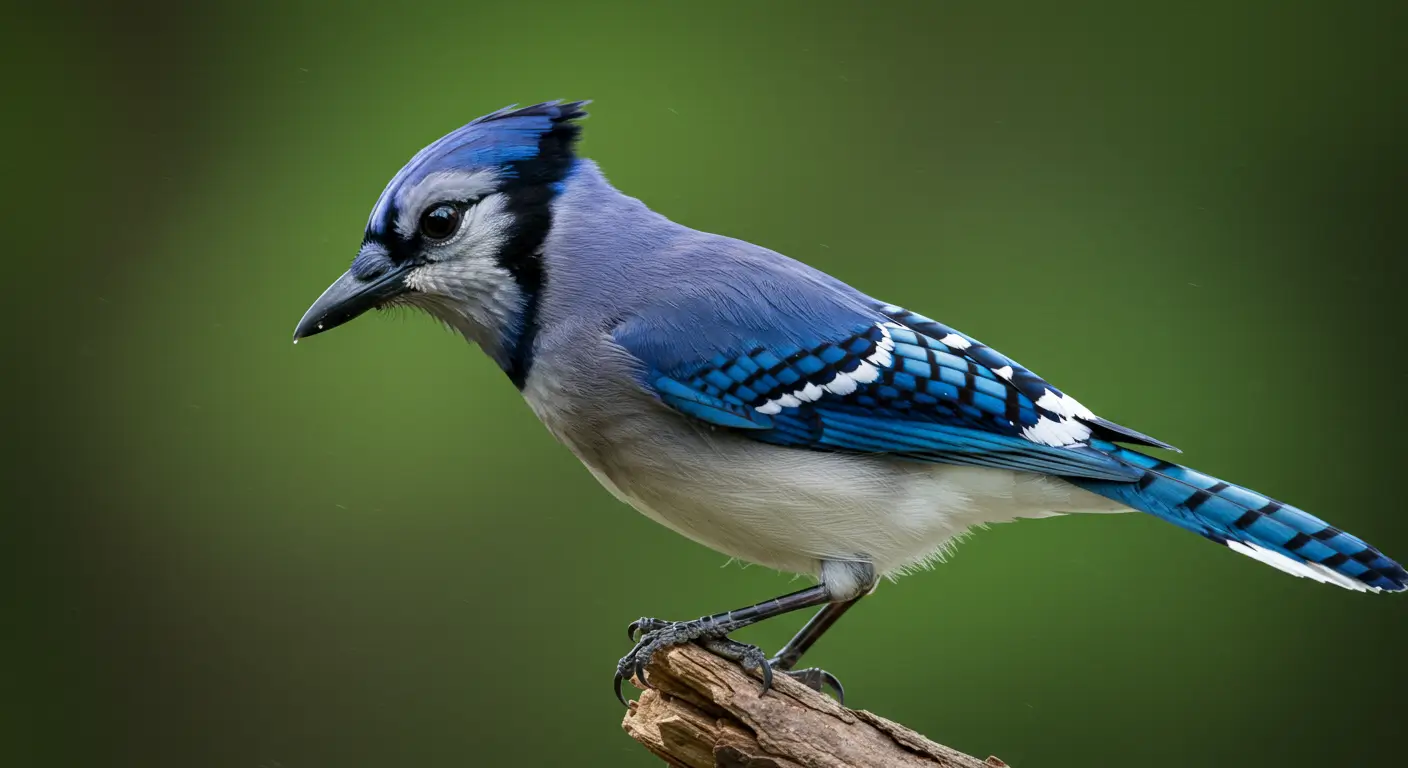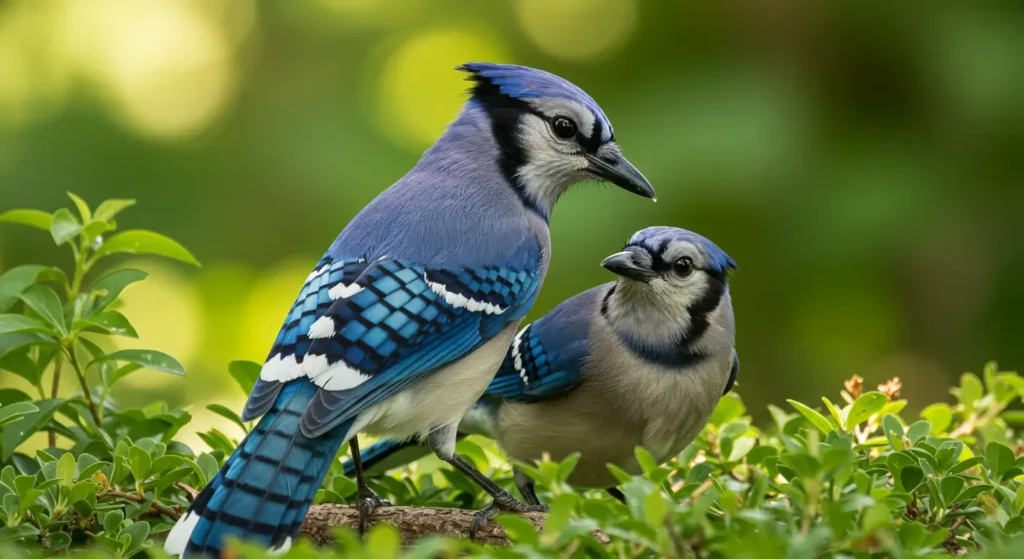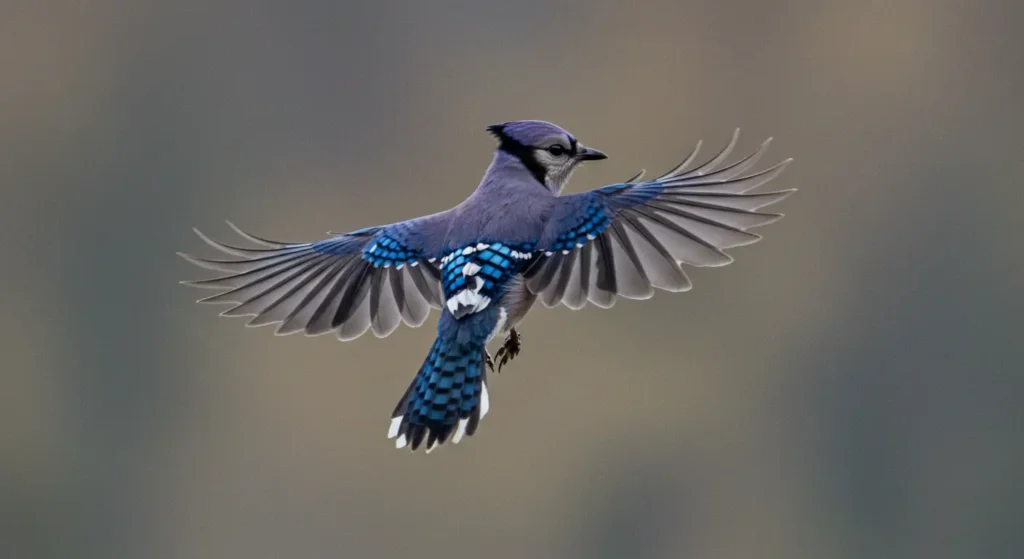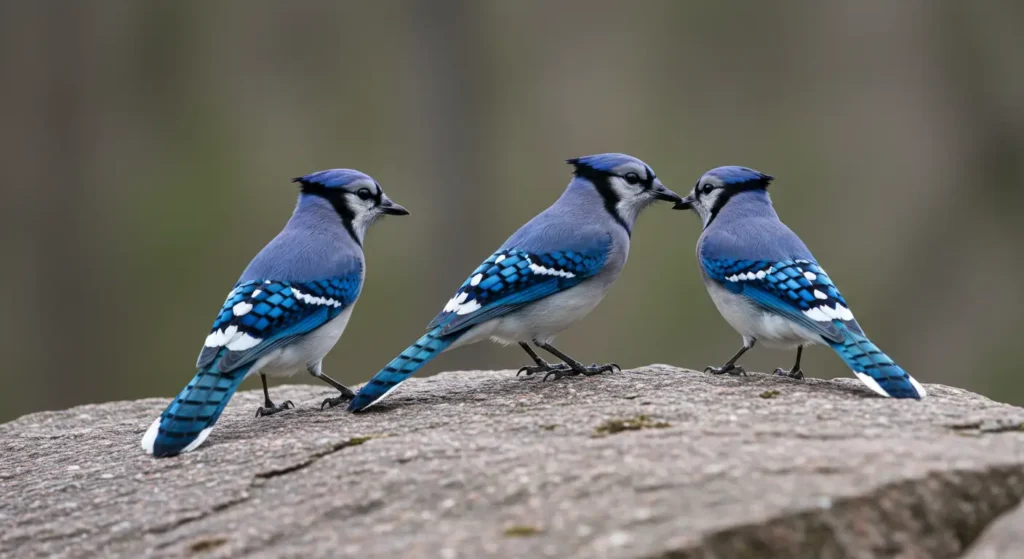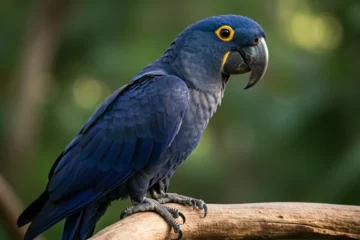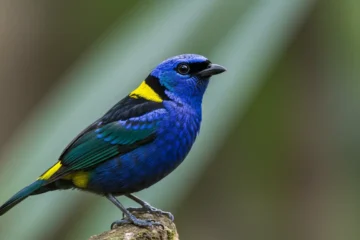The Blue Jay is a bright blue songbird commonly seen across the eastern and central parts of the United States. It’s known for its bold behavior, loud calls, and striking blue feathers with black and white markings.
Blue Jays often visit backyards where most bird feeders are present. They eat seeds, nuts, insects, and sometimes small frogs or bird eggs. You’ll often spot them in oak trees, where they collect nuts to store for later.
Images of Blue Jay
Price of Blue Jay
A Blue Jay typically costs between $200 and $500. The price depends on the breeder, age, and whether the bird is hand-raised.
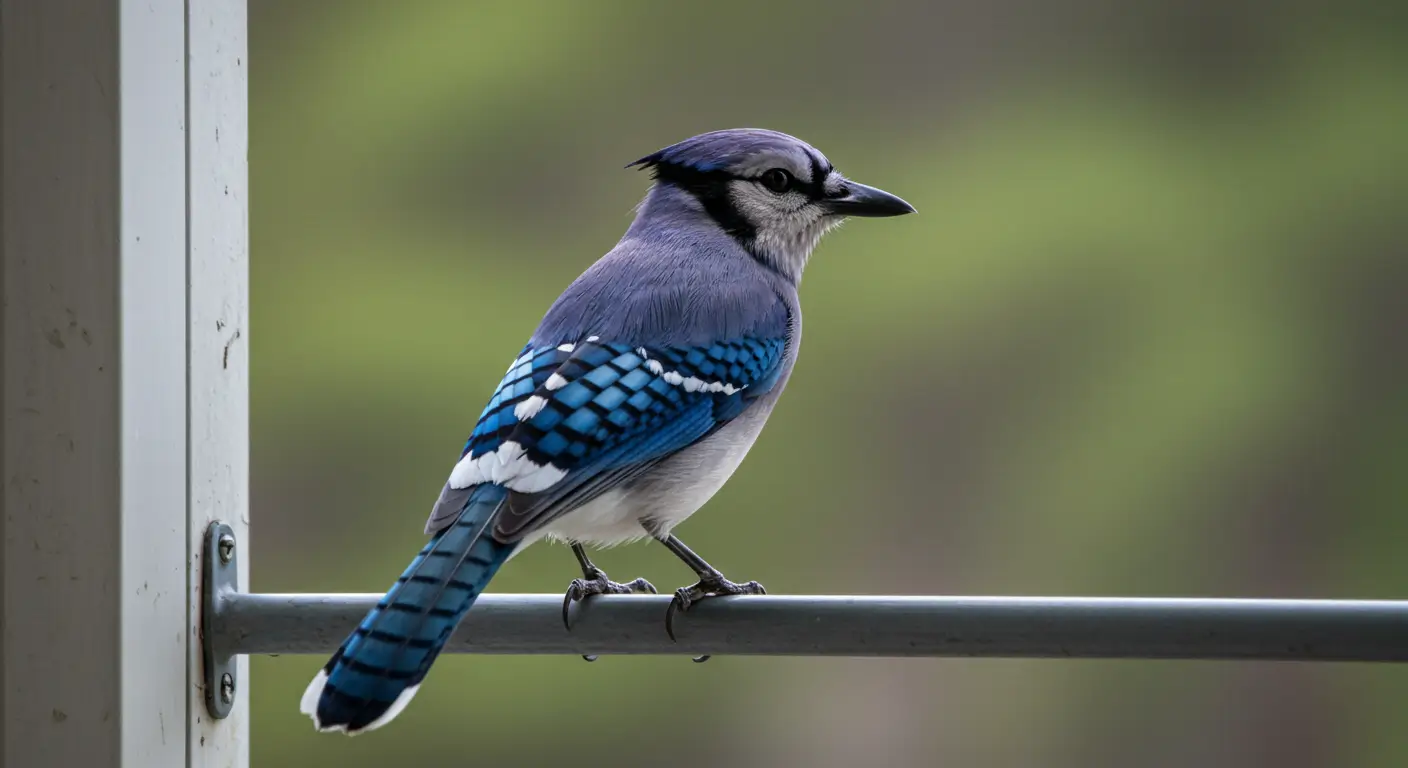
General Characteristics of Blue Jay
Blue Jay is an amazing bird with a dominating appearence and attractive voice. Here are some prominant characteristics of this bird:
| General Characteristic | Feature Specific to Blue Jay |
| Scientific Name | Cyanocitta cristata |
| Family | Belongs to the crow family (Corvidae) |
| Size | About 9–12 inches from beak to tail |
| Color | Bright blue back with white chest and black markings |
| Diet | Eats acorns, insects, nuts, seeds, and occasionally small animals |
| Sound | Known for loud “jay jay” calls and mimicry of hawks |
| Wingspan | Around 13 to 17 inches wide |
| Breeding Season | From March to July |
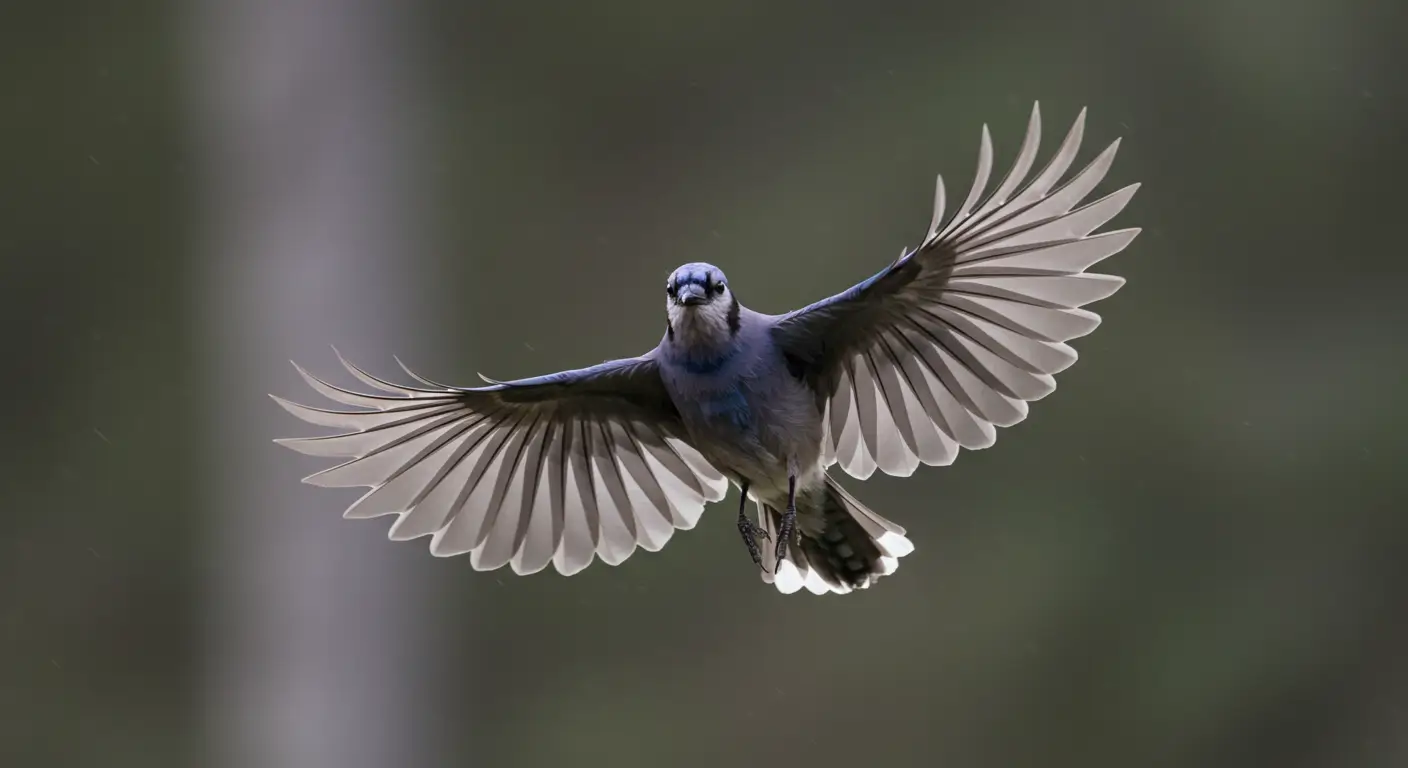
Lifespan of Blue Jay
A Blue Jay lives around 7 years in the wild. It can live up to 17 years in captivity with good care.
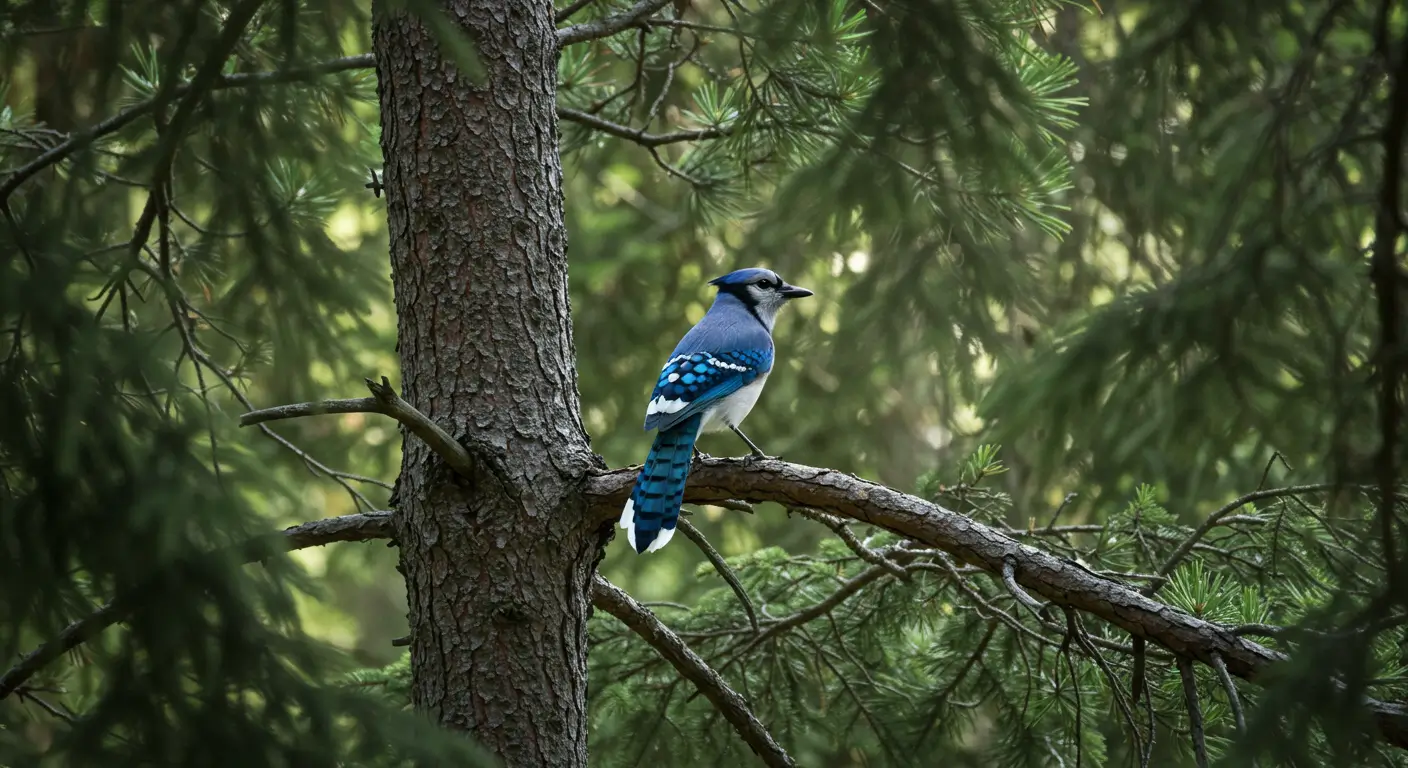
Interesting Facts About Blue Jay
This bird grabs the attention of people seeing it through its different activities. Here are some interesting facts related to this Blue Jay:
1. Use Hawk Calls to Scare Off Other Birds
Blue Jays often use the calls of Red-shouldered Hawks. This trick helps them scare away smaller birds from feeders or territory. It gives them access to more food or space.
The mimicry can sound almost identical. This behavior shows how smart and tactical they can be.
2. Recognize and Remember Human Faces
Blue Jays can remember people who feed them or pose a threat. They may return to the same spot when fed regularly by someone. They may avoid people who disturb their nests.
This memory skill supports their survival in human-inhabited areas. It’s also a quite rare trait among wild birds.

3. Bury Food and Come Back Later
These birds are known to grab food like acorns, peanuts, and seeds. They bury the food in the ground or hide it in trees. They come back after some time to retrieve it.
This behavior supports tree growth by accidentally spreading seeds. Their role in forest ecosystems is often overlooked.
4. Blue Color is Not from Pigment
Blue Jays aren’t actually blue due to pigment. Their feathers have a structure that reflects light in a way that makes them look blue. The blue disappears if you crush the feather.
This optical illusion is caused by light scattering. It’s a fascinating trick of physics in nature.
5. Cooperate in Small Groups for Defense
Blue Jays sometimes form small groups to mob predators. They dive at hawks, owls, or cats to drive them away. This behavior is called “mobbing”.
It helps protect their nests and young. It’s a rare example of cooperative defense among songbirds.
6. Use Tools in Captivity
Blue Jays have been seen using tools in controlled environments. They use paper or sticks to reach food. This ability isn’t often seen in wild songbirds.
It points to their high level of problem-solving skills. Scientists study this trait to learn more about avian intelligence.
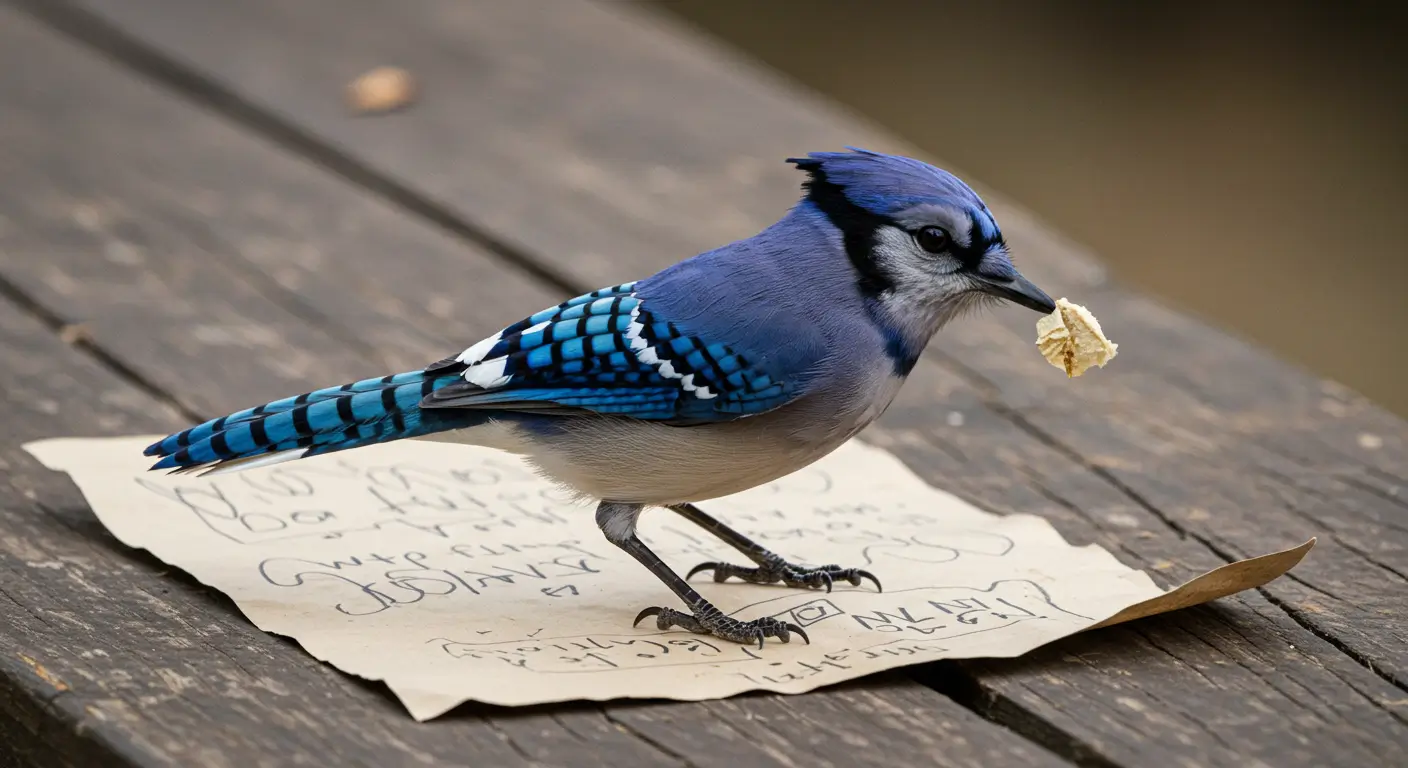
7. Crest Reflects Their Mood
The Blue Jay’s crest feathers rise or fall depending on how it feels. The crest is flat when the bird is relaxed. It stands straight up if threatened or excited.
This makes it easier for other birds to read their signals. It’s a built-in communication system in these birds.
8. Can Crossbreed With Other Jays
Blue Jays have been observed interbreeding with Steller’s Jays in some cases. This only happens where their ranges overlap. The offspring often have mixed colors and behaviors.
These hybrid jays are unusual and not commonly seen. It highlights their adaptability in overlapping habitats.
9. Pretend to Be Hurt to Distract Predators
Blue Jays may fake an injury when their nest is in danger. They make loud calls and flap on the ground to push predators away. This strategy is called a distraction display.
This is quite effective in protecting their eggs or chicks. It’s also a clever survival tactic.
10. First Birds to Visit Feeders in Snow
Blue Jays are often the first birds seen at feeders during snowstorms. They’re tough enough to handle the cold and claim food quickly. Their thick feathers help them stay warm.
This behavior shows their boldness and determination. It gives them an advantage in harsh winters.
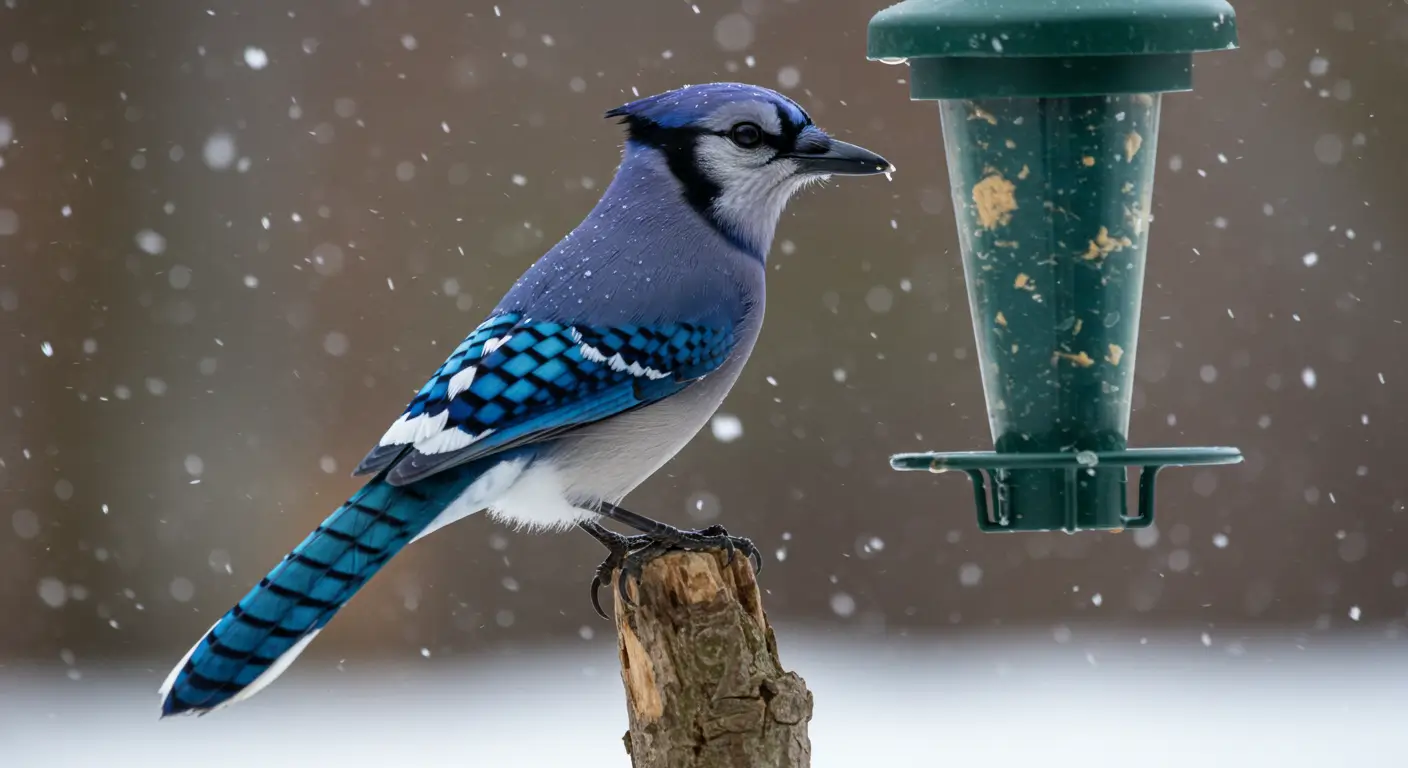
11. Blue Jays Have Regional Dialects
Blue Jays have slightly different calls in different parts of country. These “dialects” are shaped by the region and local bird communities. It helps them recognize familiar individuals.
This pattern is similar to how humans develop accents. It adds to their vocal complexity.
12. Sometimes Eat Other Birds’ Eggs
Blue Jays occasionally eat eggs or nestlings despite the fact that most of their diet includes seed and nuts. This doesn’t happen often, but it’s part of their opportunistic feeding.
It gives them extra nutrition during breeding season. It also shows their ability to adjust their diet when needed.
13. Learn New Sounds From Their Environment
Blue Jays can pick up sounds from their surroundings besides mimicking hawks. They’ve been heard copying human whistles, cat meows, and other bird calls.
This sound-learning ability isn’t common among most songbirds. It makes them one of the more vocal birds in suburban areas.
14. Play an Important Role in Reforestation
Blue Jays help oak forests grow by burying thousands of acorns every season. They forget many of these acorns, which then sprout into trees. This behavior has helped forests regenerate in some areas. Their impact on the ecosystem is larger than it seems.
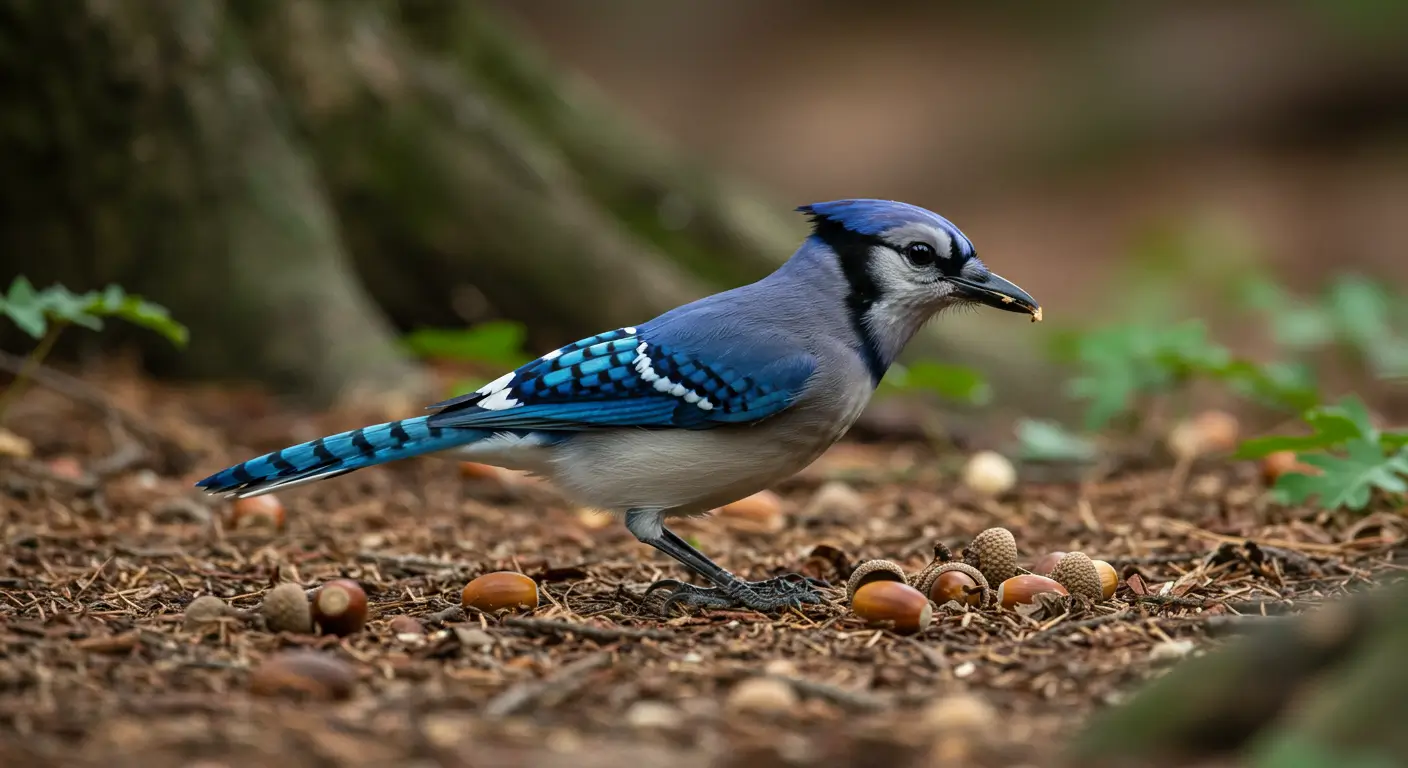
Sightseeing of Blue Jay
These birds can be oftenly seen in different parts of the U.S. but most people become quite engaged in their activities after seeing them.
| Location | State in Which it is Located |
| Adirondacks | New York |
| Chattahoochee National Forest | Georgia |
| Austin Greenbelt | Texas |
| Everglades edges | Florida |
| Cuyahoga Valley | Ohio |
| Shawnee National Forest | Illinois |
| Boundary Waters | Minnesota |
| Denver suburbs | Colorado |
| Sierra Nevada foothills | California |
| Allegheny National Forest | Pennsylvania |
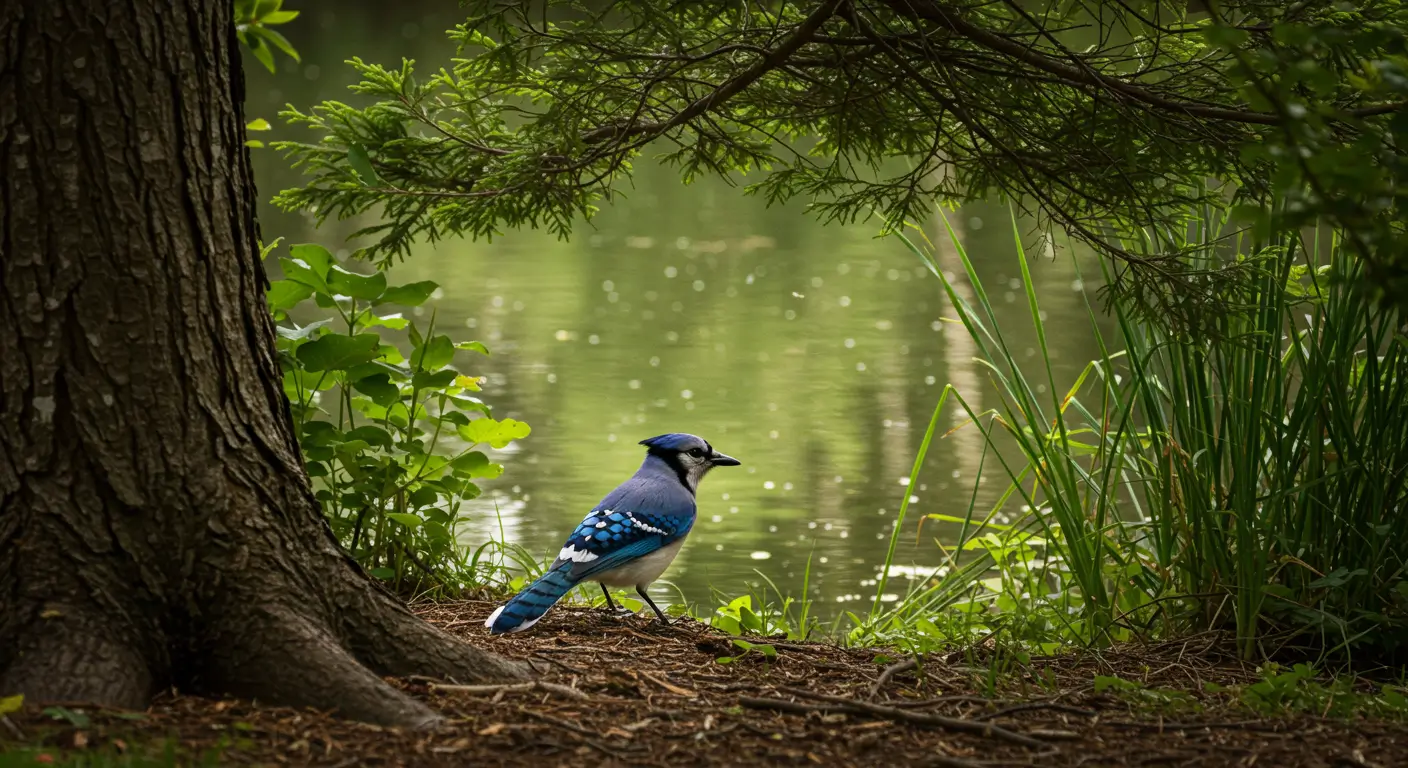
Photography Tips for Getting Good Clicks of Blue Jay
Below are some practical tips to get good clicks of this bird:
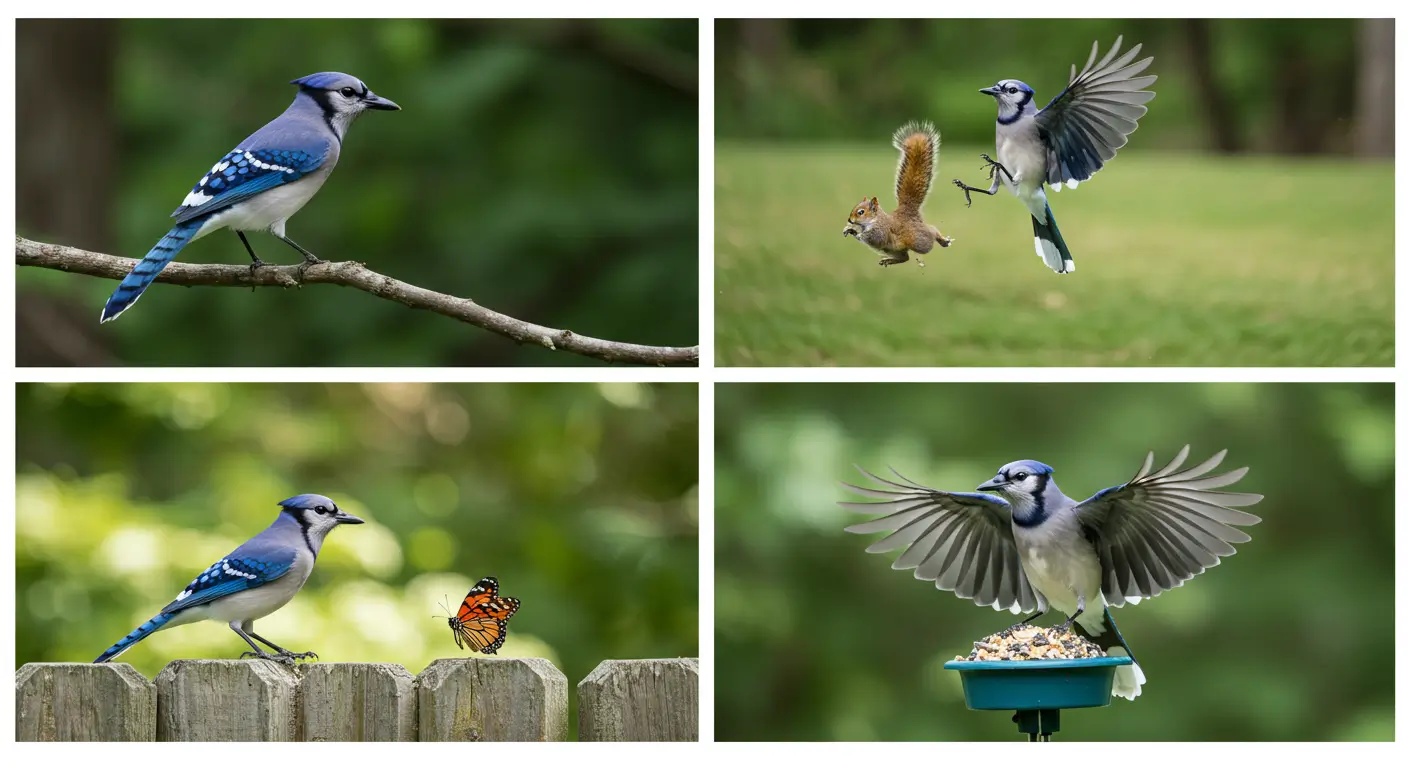
-
Wait near oak trees early in the morning when Blue Jays are most active and vocal.
-
Use a zoom lens to capture sharp close-ups without scaring them away.
-
Set your camera to burst mode to catch their fast wing movements in flight.
-
Place unsalted peanuts near feeders to attract them to a consistent spot.
-
Focus on natural lighting and keep the sun behind you for the best feather detail.
Closing Words
Blue Jays are very eye-catching birds with a very attrarctive color and in-built grace in their wings. These birds are very active, dominanat, and have a quite high level of intelligence. They can copy the sounds of other birds and adapt to the regional sounds like humans. It is no less than a nature’s marvel.
FAQs
1. What do Blue Jays eat in the wild?
Blue Jays eat acorns, nuts, seeds, insects, and sometimes small frogs or bird eggs. They’re also known to raid bird feeders for peanuts and sunflower seeds.
2. Are Blue Jays aggressive toward other birds?
Yes, Blue Jays can be territorial and may chase away smaller birds from feeders or nests during breeding season.
3. Where do Blue Jays usually live in the U.S.?
Blue Jays live mostly in eastern and central U.S. forests, especially oak and pine woods, but they also adapt well to suburban backyards.
4. Do Blue Jays migrate every year?
Some Blue Jays migrate while others stay year-round. Migration patterns are irregular and often depend on food availability.

